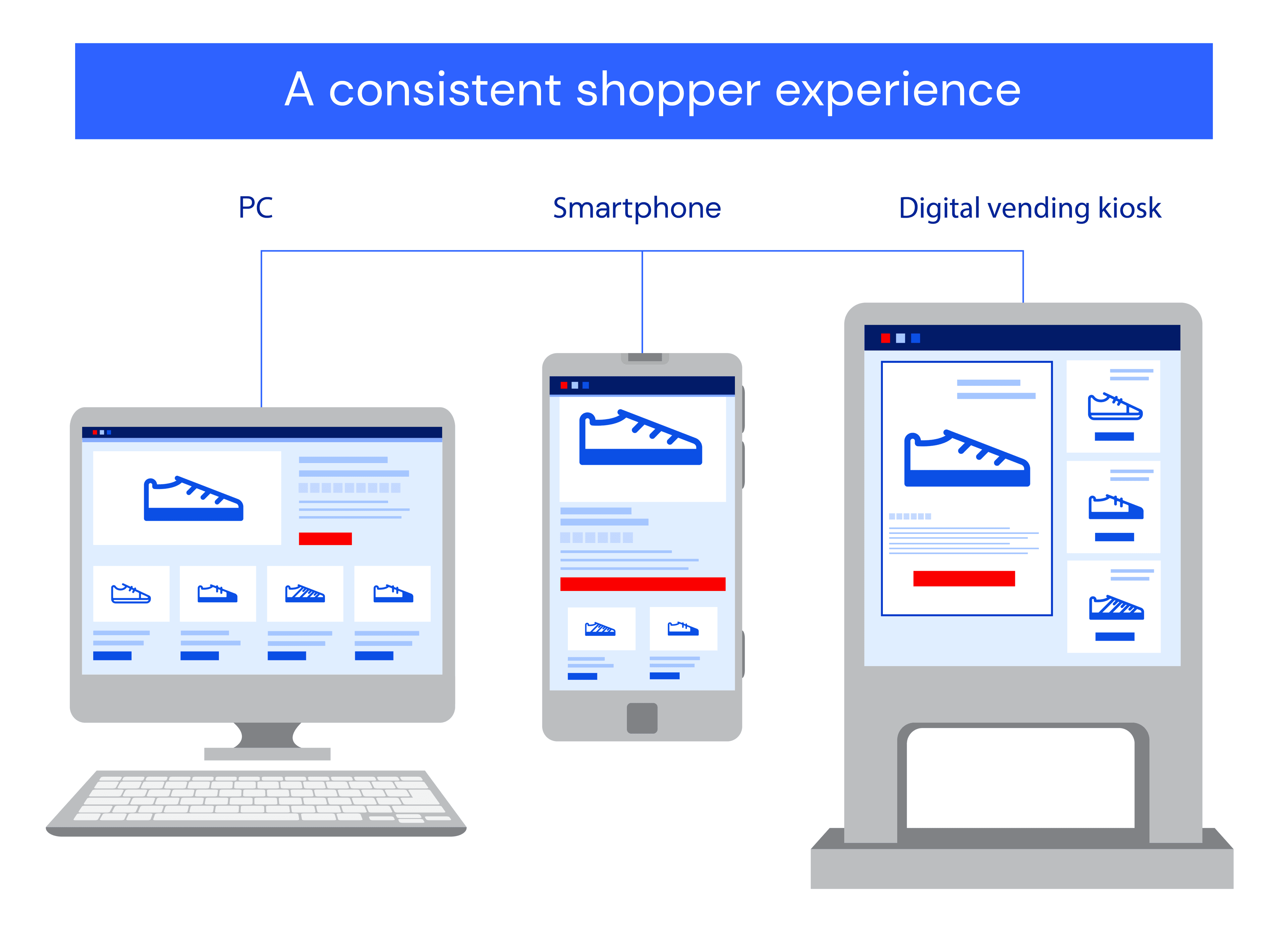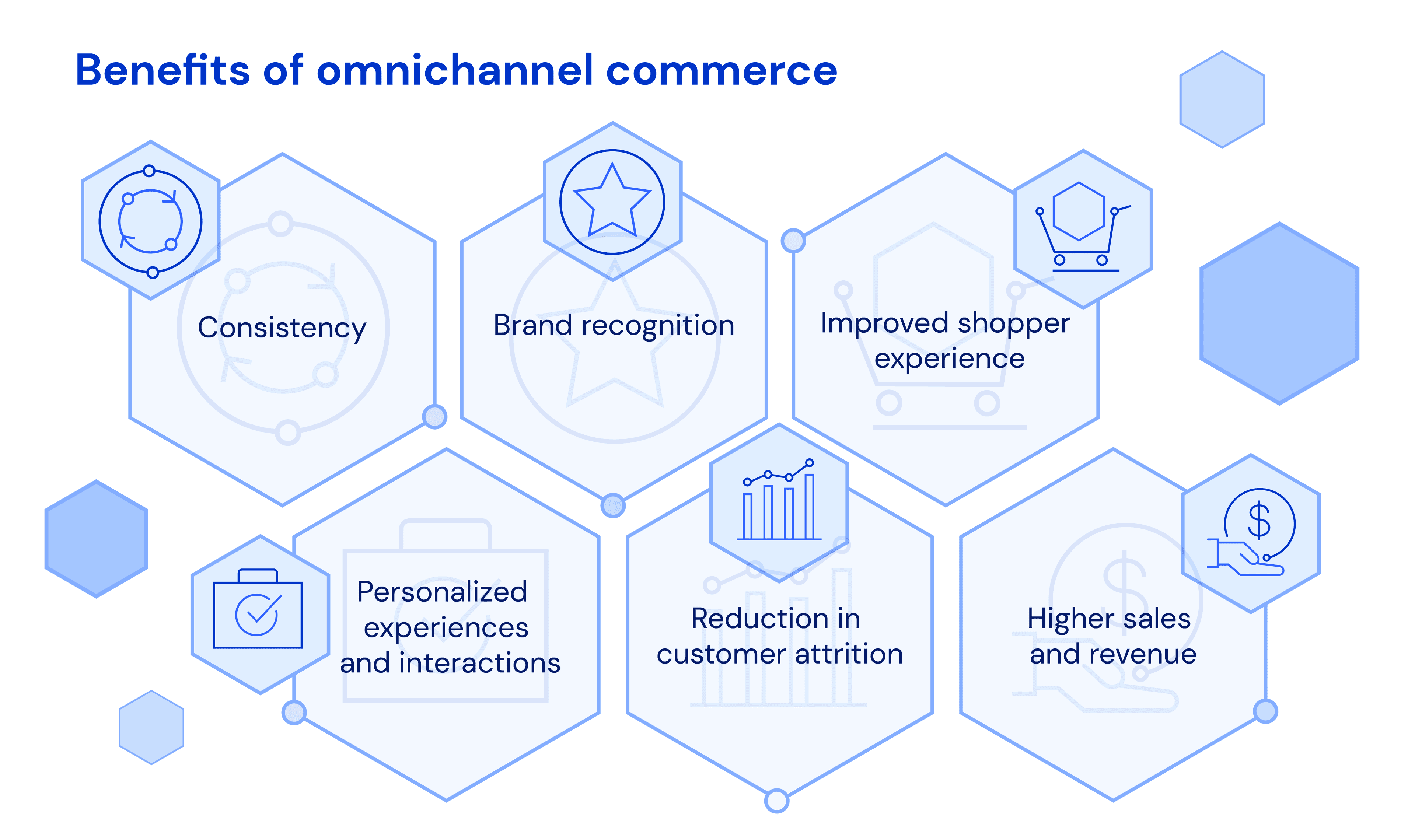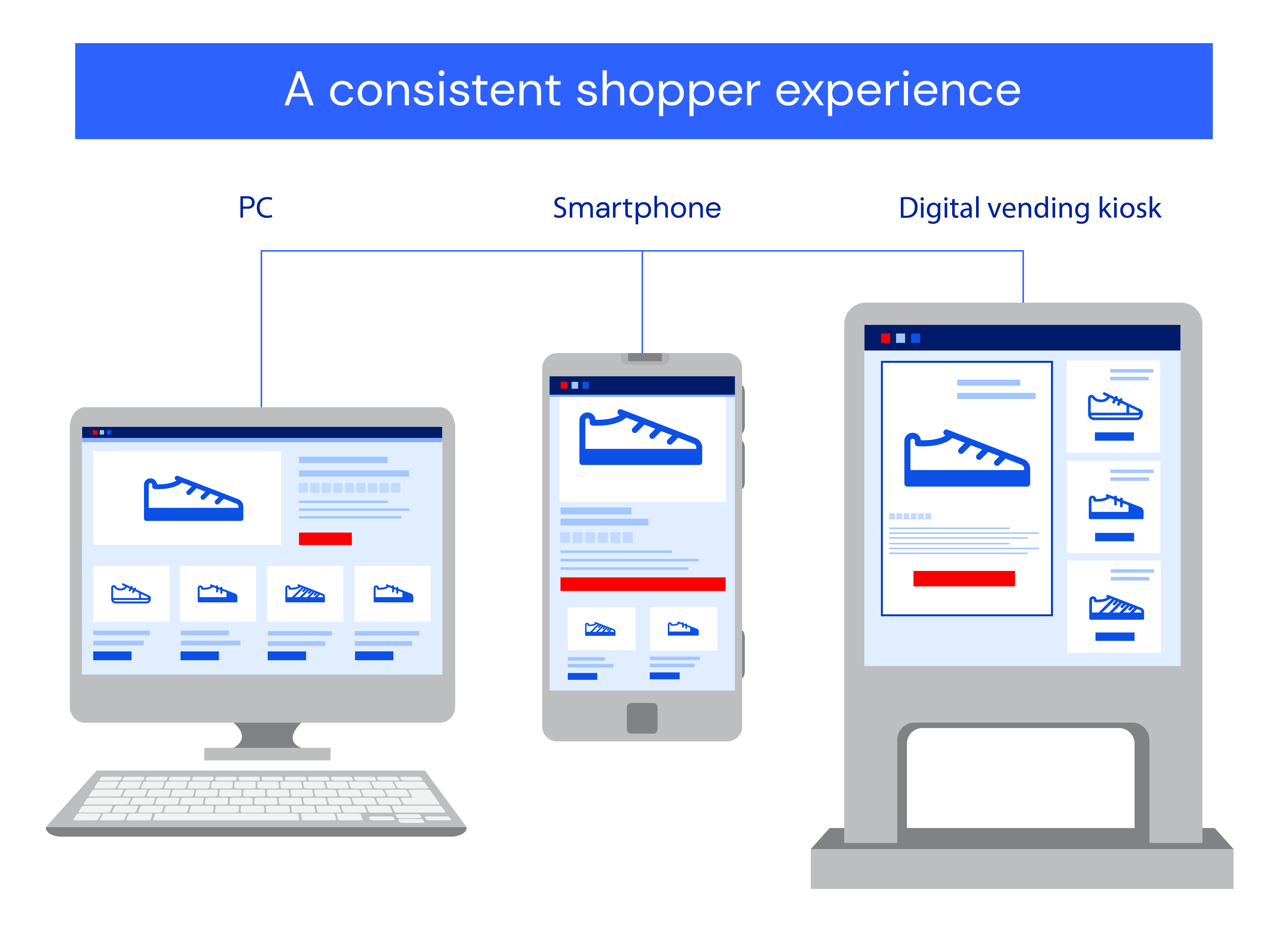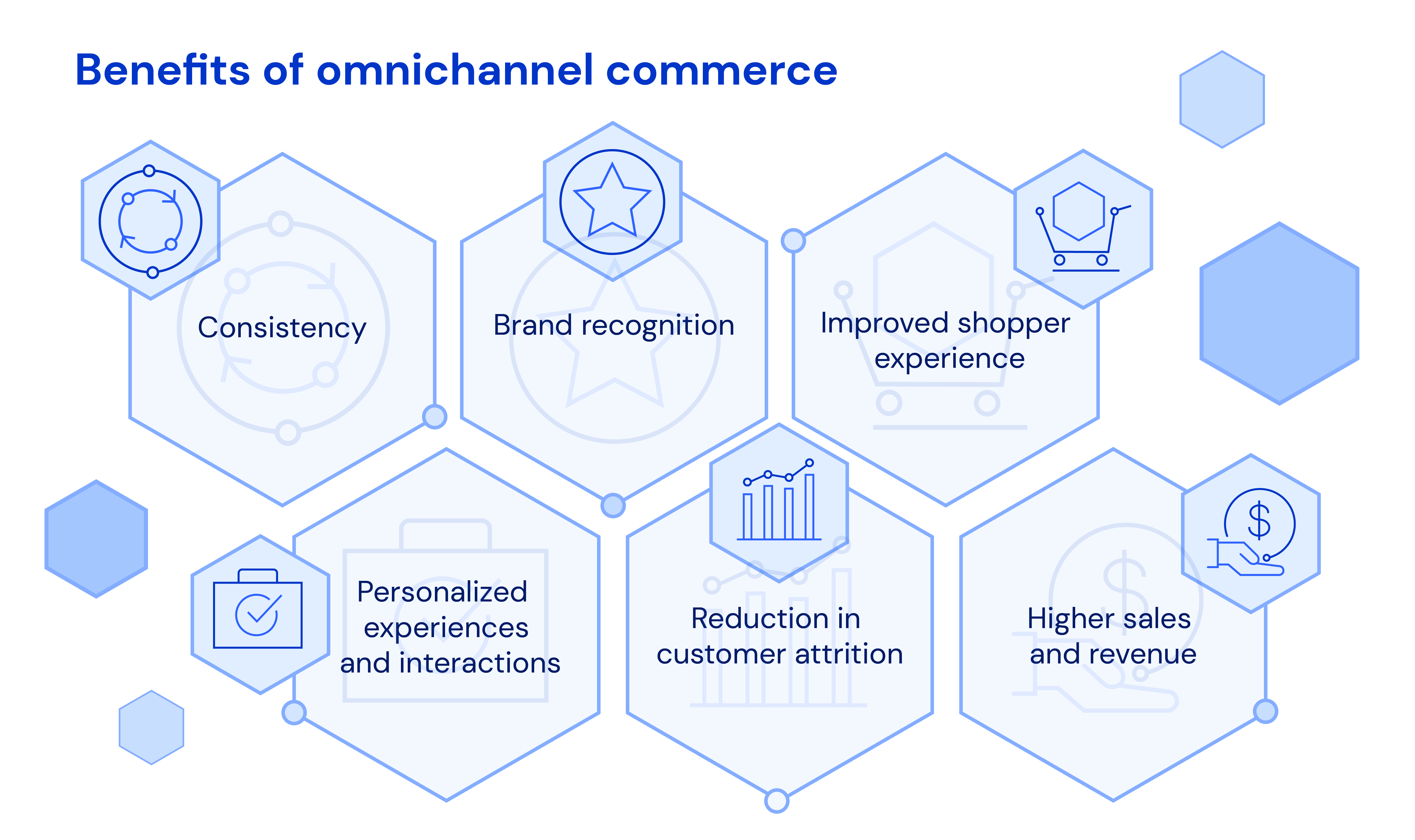Uniform blog/Omnichannel commerce: connect with customers everywhere
Omnichannel commerce: connect with customers everywhere
Omnichannel commerce: connect with customers everywhere
The birth of the internet in the mid-1990s drastically changed shopping practices with increasingly more transformation over the last two decades. Tablets, smartphones, smart TVs, and streaming have shifted how we interact with content, consume ads, and do business with our favorite brands. In essence, the customer journey from brand awareness to purchasing—i.e., from print ad to order form or from shelf to cash register—is no longer a straight line. Since customers can connect with you from any point of their journey and any stage of the marketing funnel, omnichannel commerce, which offers a unified shopping experience at all channels and devices, is essential.
To succeed in this economy, therefore, you must present a consistent message across the touchpoints.

Omnichannel versus multichannel
In terms of marketing, a channel, e.g., a brick-and-mortar store, ads on Facebook and Google, etc., is a means through which you communicate with consumers or attempt to influence them to make purchases. The strategy you adopt could be single-channel, multichannel, or omnichannel.
Single-channel
A single-channel strategy leverages only one conduit: a physical retail shop, an online store, or ads on a social-media platform.
Multichannel
In a multichannel strategy, the same content, branding, and messaging display across channels, each operating independently. For example, if you run both a traditional supermarket and an online store, the two don’t communicate or interact with each other, lacking a seamless experience for consumers.
Omnichannel
Omnichannel retail boasts multiple channels that work together so that content, branding, and messaging are constant across channels: the physical store, the virtual outlet, and mobile app. The result is a consistent experience regardless of the channel consumers choose.
Benefits of omnichannel commerce
Besides consistency and ease of brand recognition, unifying marketing, messaging, and branding across channels yields tangible benefits, notably the ones described below.

Improved shopper experience
Even though “meet your customers where they are” is a mantra iterated all too often in marketing, you can do that with omnichannel commerce. Through a consistent presence across channels, you can show up for consumers exactly how and when they want you to, which translates to extreme convenience for purchase transactions.
In addition, given the complexity of today’s target audience, interacting with shoppers across platforms gives you a more holistic understanding of who your ideal customers are, what they like, and what motivates them. Subsequently, you can serve them more personalized experiences and interactions with your brand, making it the must-have solution in the nick of time.
Higher sales and revenue
The convenience of omnichannel commerce boosts revenue and sales. Why? Because consumers nowadays desire a simple, easy, and intuitive shopping experience. Delivering exactly that naturally generates more sales. Moreover, fine-tuning that experience—and customer service—promises to convert first-time buyers to repeat customers. Talk about a win-win!
Simultaneous is a reduction in customer attrition. According to marketing experts, you must “touch” a prospect at least seven times before winning a sale. Reaching out to your target audience across channels leads to more touchpoints, converting cold or lukewarm leads into sales. Your omnichannel presence could even bring to your funnel shoppers who’ve abandoned their cart, raising your revenue on the back end as well.
Implementation of an omnichannel strategy
Not surprisingly, an omnichannel commerce presence is now the preferred strategy among retailers. Implementing that efficient and rewarding approach, however, is challenging. Below are the best practices to adopt and the problems to avoid.
Best practices
Take these steps when building omnichannel commerce:
- Develop in-depth customer profiles, complete with demographic information, psychographic data, etc.
- Take a customer-centric approach by collecting data on customers’ purchase history, preferences, and cross-channel behavior.
- Integrate with other technology platforms: mobile apps, social media, e-commerce sites.
- Align your organizational structure by encouraging cross-team collaboration and communication. Avoid structures that could lead to silos.
- Practice comprehensive data management.
- Combine your online and offline efforts.
Challenges
Here are the tasks you might find difficult to tackle:
- Integration of data across platforms and from online and offline sources.
- Creation and organization of your team’s technology infrastructure.
- Fulfillment of customer expectations across touchpoints.
- Allocation of proper resources to platforms that warrant the most time, attention, financial support, etc.
- Tracking of campaign attribution, i.e., the source of leads and conversions, to optimize performance.
- Maintenance of accurate and consistent information across channels.
Make no mistake, pulling off effective omnichannel marketing is no cakewalk. Your team must constantly think “big picture” and consider all channels in their tasks, supported by a rock-solid commerce architecture with a configuration conducive to serving shoppers at all channels.
Above all, avoid fragmentation and siloing, and do all you can to foster collaboration and communication among your teams.
The future of omnichannel commerce
Omnichannel commerce will definitely become more important as our lives integrate more and more with technology. Companies that fail to present a consistent message across platforms will be left fighting over the “crumbs” left by the businesses that do.
Uniform is here to help. To learn more about omnichannel-commerce solutions and digital experience composition platform (DXCP), contact us please. We’ll show you the beginning steps and ensure that you’re set up for success as we march into the future of commerce.
Starbucks and Chipotle contact their customers through mobile apps, social media, digital ads, etc. Regardless of how they interact with the brand, customers are served a consistent experience and messaging.







.png&w=1080&q=90)
.png&w=1080&q=90)
.png&w=1080&q=90)